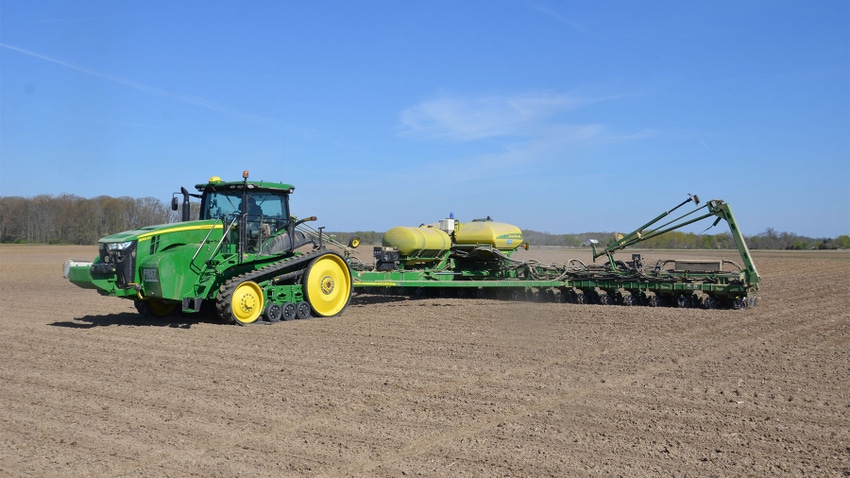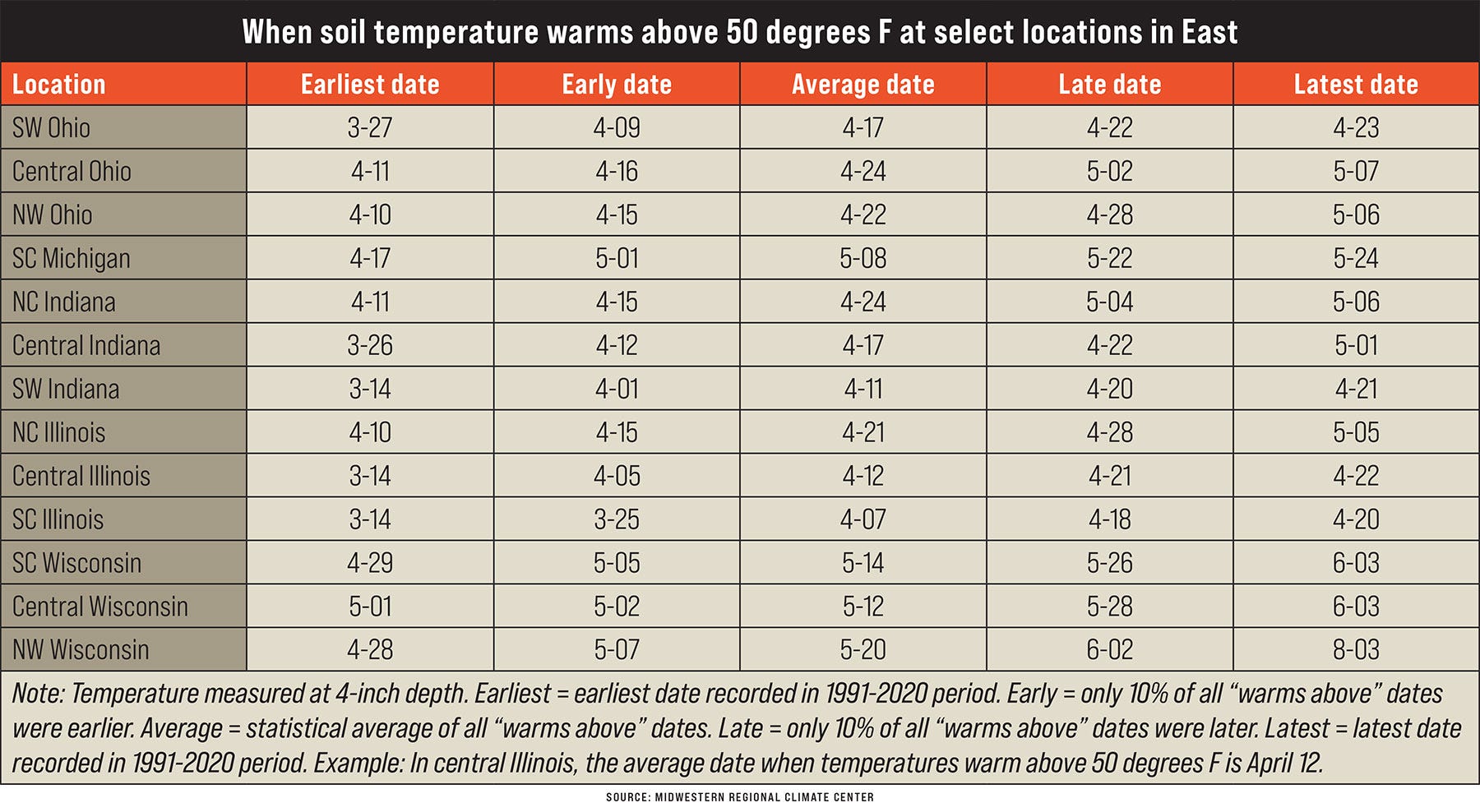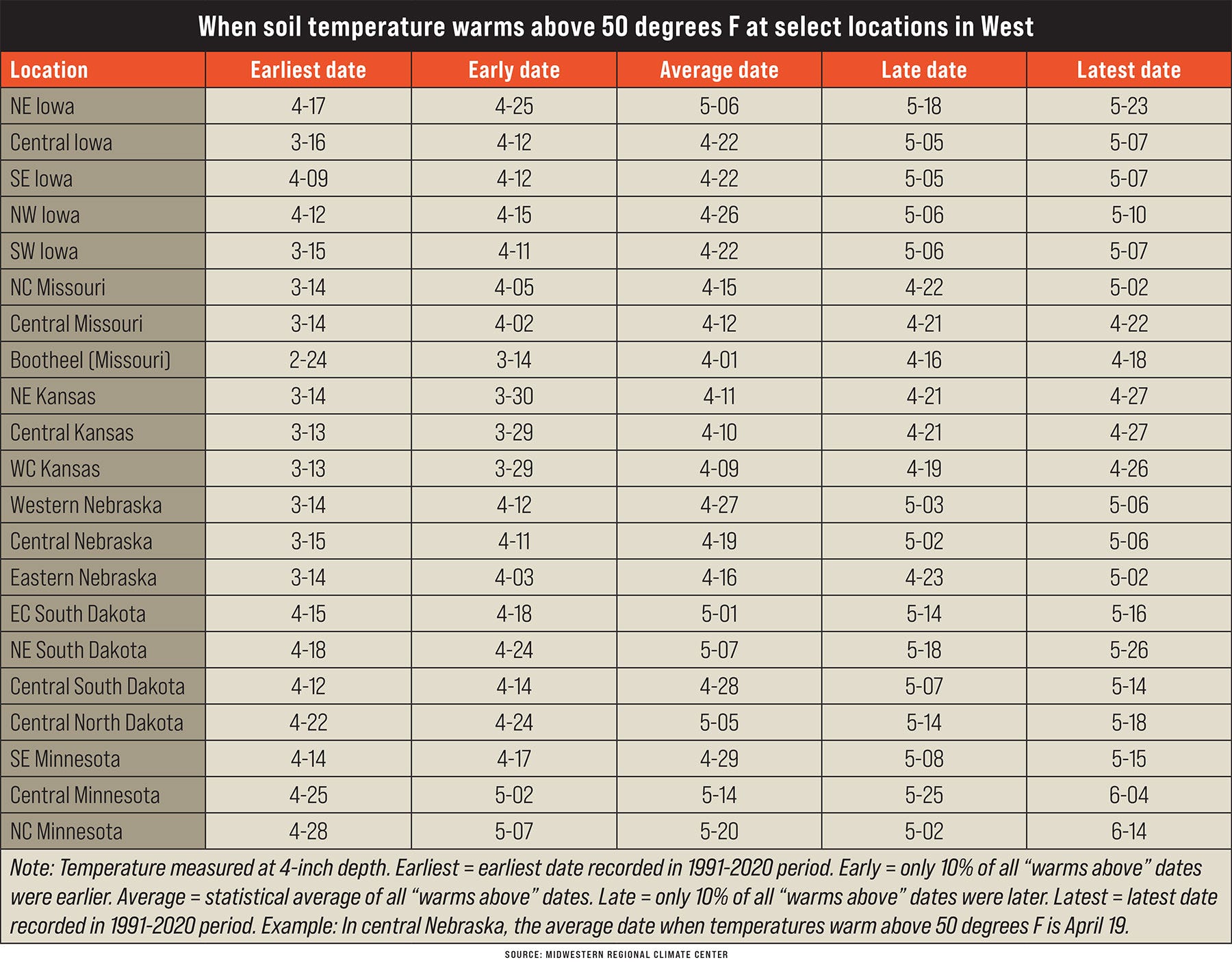
Are you a calendar person or a soil temperature person when it comes to dropping the green flag for planting? If you live by soil temperatures, then the Soil Temperature Climatology Tool should come in handy. It’s not a replacement for checking soil temperature on your own soils, but it’s a helpful guide.
Dennis Todey, director of USDA’s Midwest Climate Hub in Ames, Iowa, notes that the recently launched tool was developed by the Midwestern Regional Climate Center in cooperation with the Midwest Climate Hub. The MRCC is located at Purdue University.
“The tool provides historical 4-inch soil temperature statistics based on the period 1991 to 2020 for the north-central United States and can provide information to support on-farm management decisions,” Todey says. The tool is built upon data from across the U.S. from 1991 through 2020. Use it to answer questions like, “What would be considered an early date for a location’s soil temperature to warm above 50 degrees F?”
Or maybe you want to know the absolute earliest date soil reaches 50 degrees at your location over time. Or, more likely, if you are using the tool to guide selection of target planting dates, you will want to know the average date when temps warm above 50 degrees.
Find the tool and instructions for how to use it at the USDA Midwest Climate Hub webpage.
Do you apply anhydrous ammonia in the fall? Use the tool to find expected dates when soil temperature will fall below 50 degrees. In fact, the map allowing you to select locations comes loaded with fall data. Simply click on the “Warms Above” option to convert it for use in the spring.
Check out the tables below to see what type of information the tool can generate. Todey notes that updates will be made in 2024, and more features will be added.


Read more about:
WeatherAbout the Author(s)
You May Also Like




